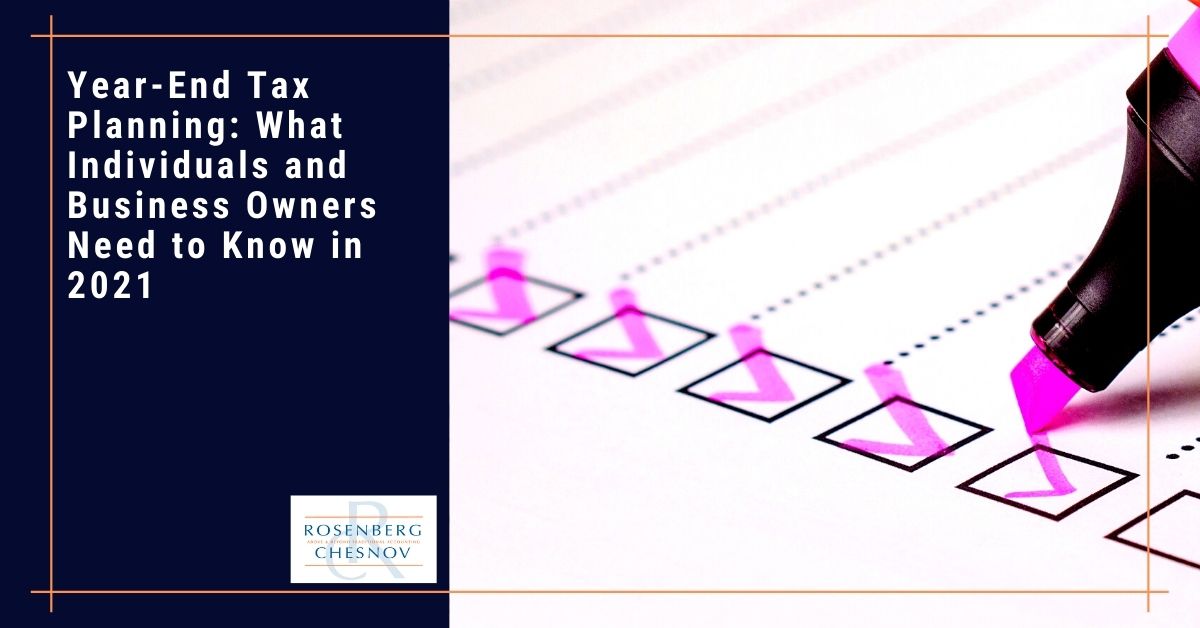What’s new in 2021?
The past year saw far-reaching legislation impact the tax code, from the American Rescue Plan to the Bipartisan Infrastructure Investment and Jobs Act. And with other changes on the horizon (such as the 2017 Tax Cuts and Jobs Act’s adjustments to the tax-deductibility of Research and Development expenditures, which go into effect for tax years after December 31st, 2021), both businesses and individuals will have much to consider going forward.
What about the Build Back Better Act?
As of this writing, the proposed Build Back Better Act has yet to pass the Senate. Although Senate leaders are pushing to approve the legislation before Christmas, it remains uncertain what the final version of the law will contain and what effect it will have when it comes to your taxes.
In the meantime, 2021 brought plenty of other changes to consider.
2021 Tax Law Changes
For example, the newly-expanded Child Tax Credit recipients may have to repay some or all of any excess advance payment. This is because the IRS estimated each tax credit amount based on information from previous years, such as income, marital status, or the number of qualifying children. If the information they used to calculate their estimate changed in 2021 (for example, if a recipient’s income level was higher than expected), that estimate could prove incorrect, and the recipient may owe money back.
Likewise, increased health insurance premiums may have resulted in similar overpayments, which filers may find themselves owing back to the IRS.
Additionally, single filers who don’t itemize their deductions may be able to take advantage of a special write-off for cash donations in 2021. On the other hand, the return of minimum withdrawals from retirement accounts, which had been waived in 2020, could leave some retirees facing severe penalties if they do not withdraw the required amount by December 31st. (For more on minimum withdrawal requirements, visit the IRS’s FAQ page here.)
Finally, the bipartisan infrastructure bill, which became law on November 15th, included tax provisions such as new requirements on cryptocurrency exchanges, the early termination of the Employee Retention Tax Credit, and the extension of pension plan interest rate “smoothing.” (For a more detailed discussion of the tax implications of the infrastructure bill, take a look at our recent article here.)
Beyond these specific changes, what should you keep in mind when considering your year-end tax planning, whether you are an individual or business owner? Let’s start with the former.
Year-End Tax Planning for Individuals
There are specific actions individuals can take before the new year to lower their tax bill. But depending on your income level, your strategy may need to change from previous years.
For example, a general rule of thumb for end-of-year tax planning is to defer income and accelerate deductions.
These techniques are often valuable for lowering tax liability. If you defer enough income until next year, you can sometimes qualify for a lower tax bracket. This gives you the benefit of a lower tax rate and access to certain deductions. At the same time, choosing to incur a deductible expense in the current tax year rather than the next one can allow you to deduct more on your return this year.
This rule of thumb still applies to most people. However, high net-worth individuals may need to reconsider using these techniques, as their tax rate is likely to be higher over a certain income level next year. Therefore, some individuals may want to accelerate their income, instead of deferring it, in anticipation of tax reform.
What to do before December 31st
- If you hold long-term capital assets which have appreciated, you may want to consider selling some of them before the year ends. The tax rate for long-term capital gain from sales of assets held for more than one year varies based upon the taxpayer’s income. Thus, it may be advisable for you to generate long-term capital gain at 0%, if applicable.
- December 31st is also a crucial deadline for anyone executing a Backdoor Roth IRA conversion. This date is very likely to be your last chance to take advantage of this particular loophole. So, if you are hoping to get around the income caps on Roth IRA contributions, you will need to move any balances before the end of the year to ensure that the Roth conversion is tax-efficient.
- If your employment and/or self-employment wages income exceeded a certain threshold ($250,000 for joint filers, $125,000 for married filing separately, $200,000 otherwise), the 0.9% additional Medicare tax would apply. To eliminate withholdings from this tax, consider deferring income to a later year to reduce your taxable income in 2021.
- If your employer provides flexible spending accounts, sign up before December 31st. You must do this by the end of the year, so look into it if you haven’t already. A flexible spending account can help you reduce taxes on money spent on healthcare and is a great tool.
Now that we’ve examined end-of-year tax planning for individuals, what considerations should business owners keep in mind?
Year-End Tax Planning for Business Owners
Tax planning is always critical for the success of a business. But in such uncertain times, it is more important than ever. Fortunately, many of the same basic principles that apply to individual planning also apply to your business.
For example, if your business income was down, you can consider deferring some of your tax liability to next year, when you will hopefully have bounced back. On the other hand, if your business income went up in 2021, you may want to consider pre-paying some of next year’s bills so that you can become eligible for more tax deductions this year.
Furthermore, as mentioned above, changes to R&D capitalization will go into effect beginning January 1st, 2022. For many businesses, this could mean substantial alterations to cash flow and reporting on deferred taxes. (For more on how your business can prepare for R&D tax credit changes, read our recent blog post on the subject here.) The good news is that the delayed effective date provides a window of opportunity for taxpayers to prepare to make the most of the situation.
Another move business owners can consider is claiming 100% first-year bonus depreciation. The IRS would permit businesses a deduction for qualified new and used assets (such as machinery and equipment) if the assets were placed into service this year. Thanks to the 2017 Tax Cuts and Jobs Act, the 100% write-off is available regardless of the length of time the asset was in service. This means that your business might be able to write off the entire cost of some or all of your 2021 asset additions, even if they were only in service for a few days during this tax year.
Lastly, there is one thing any individual or business owner can do: pay attention to pending legislation! With many potential tax ramifications still unknown pending the final form of the Build Back Better Act, you may still need to make more last-minute adjustments to your strategy.
As always, if in doubt, reach out to us for expertise and trusted counsel.
Planning for year-end
Remember, the contents of this post are for your information only and cannot constitute advice. Your situation may imply or require different strategies.
Nevertheless, it would be best if you were sure to take a little time as the year ends to give some thought to your 2021 taxes. After all, a little planning can go a long way.
Would you like some help?
If you are a client and would like to book a consultation, call us at +1 (212) 382-3939 or contact us here to set up a time.
If you aren’t a client, why not? We can take care of your accounting, bookkeeping, tax, and CFO needs so that you don’t have to worry about any of them. Interested? Contact us here to set up a no-obligation consultation.
Stay informed
Interested in receiving updates in your mailbox? Check out our newsletter, full of information you can use. It comes out once every two weeks, and you can register for it below.





